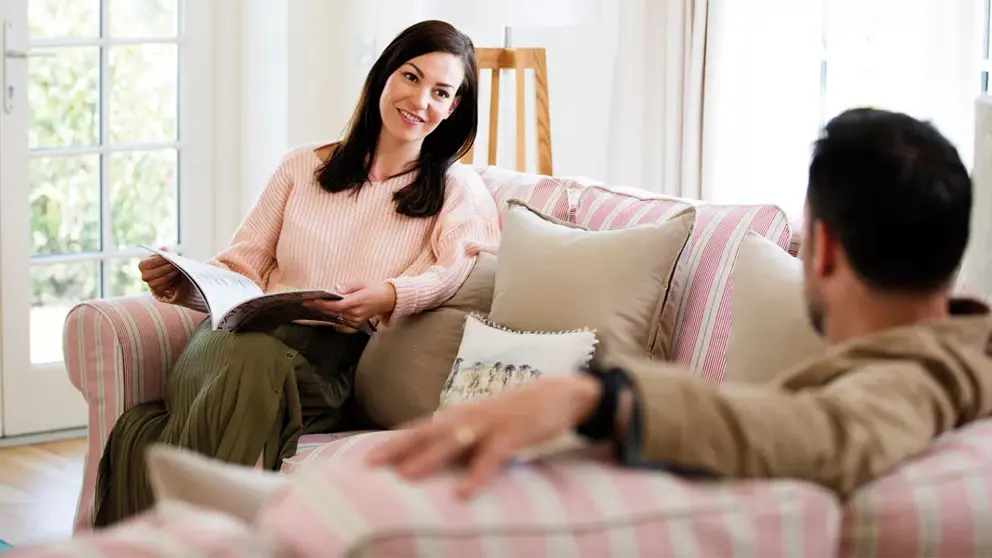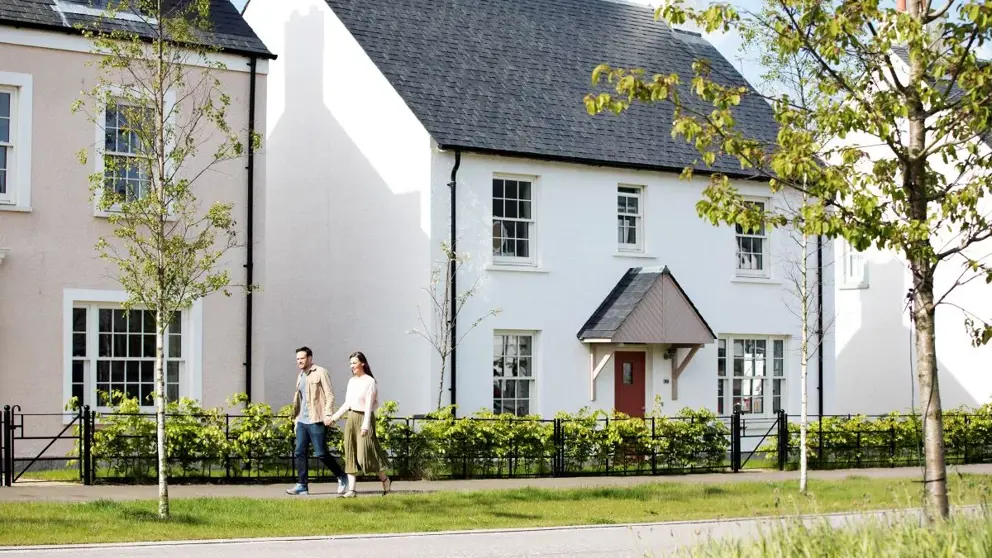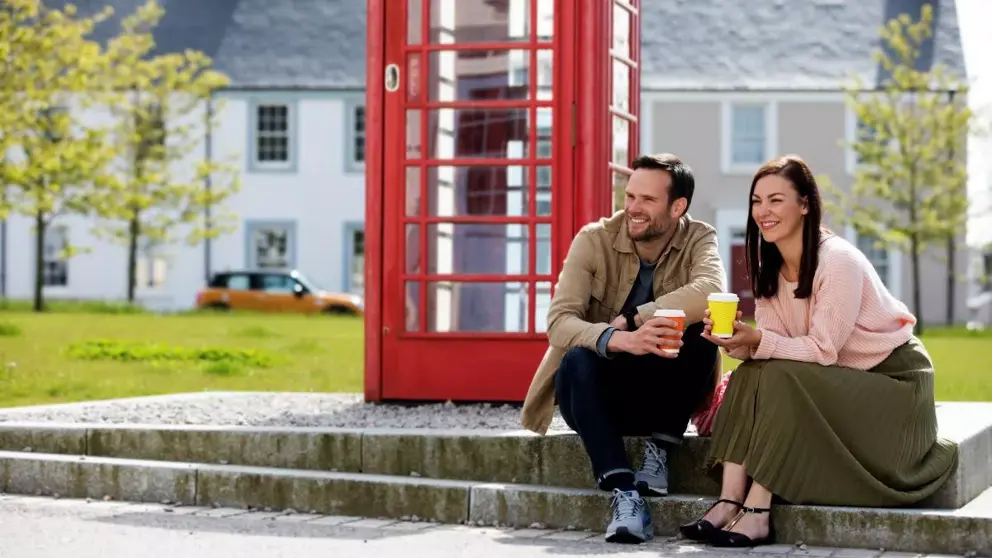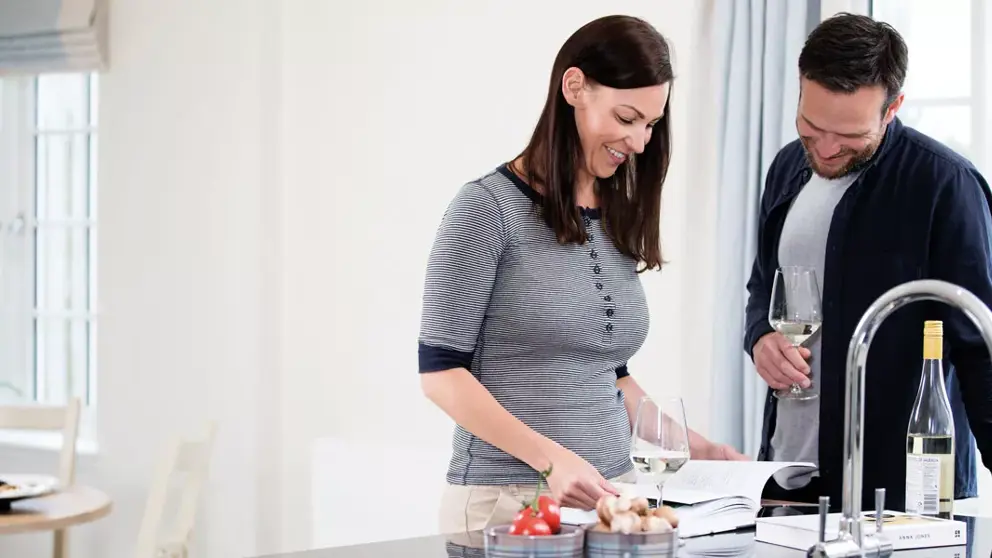Is Shared Ownership better than renting?
03 September 2025
Originally published September 2023, refreshed and republished September 2025.
There are some distinct advantages to buying a home through Shared Ownership as opposed to renting. But it’s fair to say that the reverse is also true. It’s really down to personal preference and your personal circumstances as to which option is best for you.
If you’re already renting, it’s likely you will have a good understanding of the upside – and downside – of living in a rental property. Reading about the Shared Ownership pros and cons will also help you to understand the potential benefits and drawbacks of Shared Ownership, so you can decide on your next steps.
In this article, we highlight the ways in which buying your first home through the government-backed Shared Ownership scheme can be a better option than renting a home privately. We also explore the reasons why some people prefer to rent their home, so you can make your own mind up about whether – for you – Shared Ownership really is better than renting.
In this section:
- The advantages of Shared Ownership versus renting
- Why some people prefer to rent their home
- Deciding which option is best for you
- Find out more about Shared Ownership
- Frequently Asked Questions
The advantages of Shared Ownership versus renting
1. With Shared Ownership, you have a secure home that you can live in for as long as you choose
The great thing about buying a Shared Ownership home is that – providing you’re paying your rent and mortgage – you can live there for the duration of your lease, which could be anything between 125 and 999 years.
With renting, you might not be able to enjoy that same level of certainty. If your landlord decides for whatever reason not to renew your tenancy agreement or even to sell the property you live in, there’s a real risk you’ll lose your home.
In terms of qualifying for Shared Ownership, the eligibility criteria states that you either need to be a first-time buyer or someone who doesn’t currently own a home and can’t afford to buy the traditional way. Your household income also needs to be less than £80,000 per year (or £90,000 in London).
2. Buying a Shared Ownership home tends to give you more financial stability overall
When you buy a Shared Ownership home, your monthly repayments can often be lower than they would be if you were renting privately, which is becoming increasingly expensive, as more people chase fewer available properties.
And even though you will be paying rent on the share of the property you don’t own, this is subsidised at between 2.5% and 2.75% of the rental share value a year – usually less than the market rate. This percentage is still subject to increases over time, but these will be in line with the Retail Price Index, unlike private rental increases, which landlords can activate at any time – and for any amount.
Why not try our Shared Ownership calculator to work out what your monthly costs are likely to be?
If you’re wondering how to save for a Shared Ownership deposit, the good news is that your deposit starts from just 5% of the share you’re buying not the full property price. That means it will be smaller than buying with a traditional mortgage and easier to save up! Check out our quick ways to save a deposit so you can step on the property ladder sooner!
3. Buying through Shared Ownership means you’ll benefit from a brand-new home, which you’re free to put your personal stamp on
What could be better than having a brand-new place to call home? That’s another key advantage to buying through Shared Ownership – being able to move into a fresh, new property that no-one has lived in before.
When you buy with Places for People (PfP), you also have the choice of decorating your new home to suit your individual tastes and making minor cosmetic alterations, such as putting up shelves. With renting, there are generally more restrictions on making even superficial changes to your home. There might also be a ban on owning pets.
Shared Ownership definitely grants you more freedom to create the home of your dreams.

4. With Shared Ownership, there is sometimes the option to eventually own 100% of your home
Some – not all – Shared Ownership schemes allow you to increase your percentage share (known as staircasing) all the way up to 100%. At this point, you will effectively own your Shared Ownership property and no longer need to pay rent. Even if you don’t have the option to staircase up to 100% it’s still worth increasing your share of the property as you can afford to, since the bigger your share the less rent you will need to pay.
When you rent your home privately, you will need to pay rent for as long as you remain there. Unlike Shared Ownership, which gives you the option to decrease your payments or to one day own the property and pay no rent at all, your rent will only increase over time.
5. When you buy a Shared Ownership home, you’re investing your money with the potential to make a profit over time
What’s good about buying a Shared Ownership home is that it’s an investment; as your home increases in value then the share you own will as well.
Looking to the future, if you think you might one day need to move home – perhaps to start a family or accommodate one that’s growing – any profit you stand to make on your share could help you to upsize to a bigger property.

Why some people prefer to rent their home
1. You won’t usually have to pay for home maintenance and repairs
When you buy a home, you’re responsible for maintaining the property and dealing with any repairs, which can be both costly and timely.
With renting however, it’s the property owner who has responsibility for keeping your home in good working order and for many people, especially those who are on a budget or are short on time, that’s a really attractive proposition.
The only downside to the above is that you may have to wait for your landlord to get round to dealing with repairs whereas with Shared Ownership, you have complete control about what gets done, when.
In addition, when you buy a PfP home, our two-year warranty gives you complete peace of mind, while any structural defects are also covered for the first ten years.
2. Renting gives you more choice and freedom about where to live
For whatever reason, some people need greater flexibility about where they live and rental properties tend to be available in a much wider choice of locations than Shared Ownership homes.
Others favour renting as a way to ‘test out’ a new location before making the decision to permanently settle there. Renting can even be a way to trial different property types – from a city centre apartment to a village house and garden – before committing to the buying journey.

3. When you rent, the process of moving house is usually quicker and easier
Renting usually makes it much easier to change your home, quickly.
Selling a home that you own – or own a share of, if you’ve bought the property through the Shared Ownership scheme – is a more involved process than simply ending your rental contract. It can take time to find a buyer for your home and there could be additional costs to factor in as well, which is why some people find renting more appealing. But even with those extra costs – and the extra paperwork involved – with Shared Ownership, you have the peace of mind of being on the property ladder.
And while moving into rented accommodation might be easier than buying new, it’s worth bearing in mind that being evicted from rented accommodation is easier too!
4. You pay rent not a mortgage, so you won’t lose money if the property’s price goes down
Whether the price of the property you live in goes up or down is not something you need to be concerned about if you’re renting.
Keeping an eye on the value of your home only really becomes important after you’ve bought a home and you’re thinking about selling, at which point the value of your home (or the share you own if you’ve bought a Shared Ownership property) can impact your next choice of home.
But while you won’t lose out if your rental home’s value goes down, it’s important to remember that you don’t stand to gain anything from renting either. With Shared Ownership however, you’re choosing to invest in your home for the long-term.
5. The upfront costs of renting are generally lower
When you buy with Shared Ownership, you will need to pay a deposit along with solicitors’ fees and possibly Stamp Duty as well. So, even though it can work out cheaper in the long run to buy a Shared Ownership home, the initial amounts involved might cause some people to choose to rent a home instead.
But with renting there’s still the deposit or bond to put down before you move in. And what many people don’t realise is that often this won’t differ all that much from the deposit you’d need to buy a Shared Ownership home – which starts from just 5% of the share you buy (as opposed to the property’s full value).
Another reason some people might be tempted to rent rather than buy – especially those starting out – is that some properties are available to rent fully furnished, meaning you won’t need to spend money on essentials such as furniture and white goods.
That said, when you buy new with PfP, many of our homes come with brand-new integrated kitchen appliances – certainly food for thought…

Deciding which option is best for you
So, is Shared Ownership right for me? That’s something only you can decide, based on your unique situation and aspirations, but we hope that by highlighting the benefits of each, you will be better informed about which option is best for you.
Our Guide to the Shared Ownership process could help you to make up your mind as well.
Do you have your heart set on a certain location – the city perhaps? We build Shared Ownership homes in desirable Communities right across the country, from Beaufort Park in Colindale, North West London to Mansion House at Port Loop, Birmingham and Ropeworks at Heywood, Greater Manchester. Even if homes here have sold out, it’s not the end of your search. We’re launching new developments all the time.
We’d love to answer any questions or concerns you might have. Our team of friendly experts will guide you through the entire process of buying your Shared Ownership home, and can recommend independent financial advisors who are Shared Ownership specialists, so why not talk to us today?
Renting might work out a little bit cheaper initially and give you more freedom about where you choose to live, however it’s important to take a long-term approach and to keep an open mind about the area you eventually decide to make your home.
With Shared Ownership, you’re investing in your future.
Find out more about Shared Ownership
Contact us today to take that first crucial step to living the life you want in your dream home.
Frequently Asked Questions
What is Shared Ownership?
Shared Ownership is a government-backed scheme in England designed to help first-time buyers onto the property ladder. It also helps those who don’t currently own a home – and can’t afford to buy one via the traditional route – to part-buy a new property.
The eligibility criteria for the scheme includes having an annual household income of under £80,000 – or £90,000 if buying a home in London.
How does Shared Ownership work?
Shared Ownership works by allowing People to buy a 10-75% share of a new home, using a deposit and a mortgage, and pay subsidised rent on the remaining share. This share is owned by a housing association or housing development company – and that’s who you pay your rent to.
Is Shared Ownership a good idea?
Whether or not Shared Ownership is a good idea depends on your personal circumstances. But generally, if you are looking to buy your first new home the scheme can play a big part in helping you to make your move sooner. That’s because the deposit you need starts from just 5% of the share you buy, not the full property price – so it’s a much more realistic amount to save up.
What is staircasing in Shared Ownership?
Staircasing is the process of increasing the share you own of your Shared Ownership property. It gives you the flexibility to buy more shares as and when you can afford to – in increments of 1% upwards or in chunks of 10%+ at a time – in some cases up to owning 100% of your home. As your share of your property grows, you pay less rent on the remainder.
How does the Shared Ownership service charge work?
When you buy a Shared Ownership property, your service charge – paid monthly alongside your rent – covers all the associated costs with maintaining and servicing the communal areas where you live. The service charge should be fair and transparent, with a full breakdown of what you need to pay and when, made clear to you before you reserve your home.
How much are solicitors' fees and costs for Shared Ownership?
According to Share to Buy, the cost of conveyancing and solicitor fees when buying a home range from £500 to £1,500 or more. The cost of your property and its location will have a big bearing on this. Solicitors’ fees vary from firm to firm as well, so it’s worth getting several quotes to determine who is offering the best value for money.

